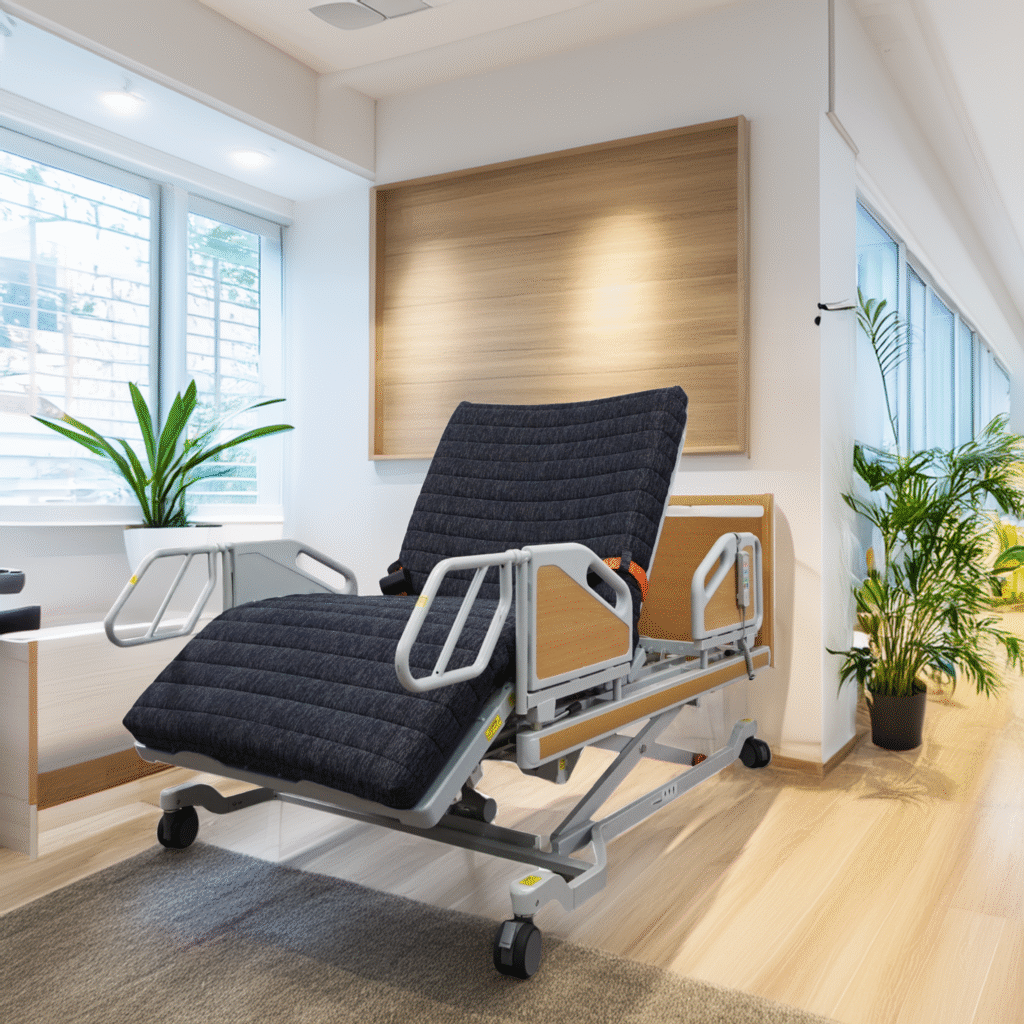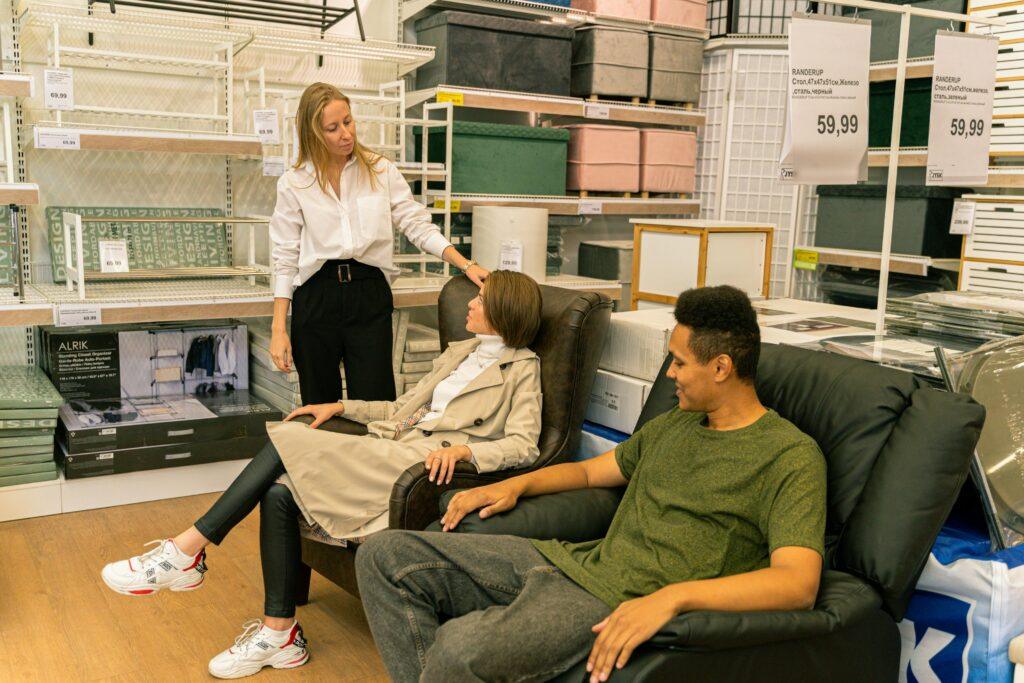
Top Benefits of Hospital Bed Rentals for Home Care
When a loved one is recovering from surgery, aging in place, or managing a chronic condition, turning your home into a comfortable and safe healing environment becomes a priority. Among the many tools available, a hospital-style bed rental stands out as one of the most effective investments you can make. These beds are specially designed to provide adjustable positioning, enhanced support, and easy accessibility, helping patients maintain comfort while promoting better recovery. From supporting patient independence to easing caregiver burden and reducing the risk of injury, hospital bed rentals make daily care routines more manageable and efficient. They also offer a cost-effective alternative to purchasing a bed outright, giving families flexibility to rent short-term for recovery periods or long-term for ongoing care needs. Many models even come with additional features such as side rails, pressure-relief mattresses, and easy mobility, making them versatile for a variety of medical and mobility requirements. Whether it’s helping a loved one regain strength after surgery, providing a safer environment for aging adults, or assisting those with chronic conditions, hospital bed rentals can significantly improve the quality of home care while giving both patients and caregivers peace of mind.

1. Promoting Patient Independence and Dignity
One of the most compelling benefits of hospital bed rental is how it supports mobility and autonomy, two elements vital to a patient’s quality of life.
Adjustability aids movement. Modern hospital beds let users raise or lower the head, feet, or entire bed height at the touch of a button, making it easier for patients to sit up, shift positions, or get in and out of bed with less assistance. This not only improves comfort but also reduces the risk of pressure sores and stiffness that can occur from prolonged immobility.
Standing-bed options accelerate rehabilitation. A standout in this category is the ReNuCare Standing Bed, which transitions through four modes: flat, reclining, sitting, and standing. Its sit-to-stand function helps users gradually resume upright posture, promote circulation, and rebuild strength. For patients recovering from surgery or managing chronic conditions, this gentle progression can support faster recovery while reducing dependence on caregivers.
Maintaining dignity in daily tasks. The ability to adjust positioning allows patients to eat, read, use tablets, or converse more naturally without relying on caregivers for every movement. It empowers them to participate in daily routines and maintain a sense of normalcy, which is crucial for emotional well-being and confidence.
Supporting caregiver ease. Adjustable beds also make caregiving safer and less physically demanding. Caregivers can reposition the bed to minimize bending, lifting, or awkward postures, reducing the risk of strain or injury while providing care efficiently.
Versatility for varied needs. Many hospital beds offer features like side rails, integrated storage, and compatibility with medical accessories such as IV poles or over-bed tables, making them a flexible solution for both short-term recovery and long-term care.

2. Supporting and Reducing Strain on Caregivers
Caring for someone at home is a hands-on job, and hospital bed rentals can relieve much of the physical and emotional burden caregivers often endure.
Less heavy lifting. Adjustable beds allow caregivers to raise or lower the bed to the optimal height, reducing the need for strenuous lifting or awkward repositioning. This helps prevent back strain and fatigue, which are common challenges in home care.
Better ergonomics. The ability to tilt or elevate specific zones, such as the head, knees, or feet, enables caregivers to perform essential tasks—feeding, wound care, administering medication, or repositioning—more comfortably and efficiently. This ergonomic advantage protects caregivers’ health over time while improving the quality of care.
Enhanced safety and peace of mind. Many hospital beds come with side rails, built-in alarms, or fall-prevention features that alert caregivers if a patient shifts or exits the bed unsafely. These measures not only reduce the risk of accidents but also provide caregivers with reassurance, particularly during overnight care or when managing patients with limited mobility.
Time savings and efficiency. With fewer manual transfers and adjustments, caregivers can dedicate more time to meaningful aspects of care, such as providing emotional support, assisting with therapy exercises, or simply being present. This improves both patient and caregiver well-being by reducing stress and allowing for a more balanced care routine.
Flexibility for different care situations. Hospital bed rentals also adapt to changing needs—whether it’s short-term recovery after surgery or long-term support for chronic conditions—giving caregivers a practical solution without the commitment of purchasing a bed outright.
Consider the scenario of an elderly spouse caring for their partner with limited mobility. With a rental bed in place, the caregiver no longer needs to lift their partner into a chair each day. Instead, the bed can be adjusted to an optimal height, reducing fatigue and injury risk.

3. Cost Savings and Financial Flexibility
Owning a high-end hospital or a standing bed can be prohibitively expensive, especially when care needs are temporary or may change over time. Rentals offer a flexible, lower-risk path to access the benefits you need without the long-term financial commitment.
Low upfront investment. Purchasing a hospital bed outright can cost thousands of dollars, while renting converts that large capital expense into predictable monthly payments. This makes it easier for families to budget for care and invest in other important resources, such as physical therapy or home modifications.
Avoid being “stuck” with unused equipment. Once the recovery or care period ends, you can return the bed rather than dealing with storage, resale, or the depreciation of equipment you no longer need. For short-term recovery—such as post-surgery rehabilitation—this flexibility ensures you only pay for what you use.
Insurance and Medicare support. Hospital beds fall under the category of “durable medical equipment” (DME). With a physician’s prescription, Medicare Part B will typically cover 80 percent of the approved rental cost, leaving you responsible for 20 percent coinsurance after the Part B deductible. Many private insurance plans also provide similar coverage, which significantly reduces out-of-pocket expenses. For families managing long-term conditions, this can make a huge financial difference.
Upgrades and flexibility. Another major advantage of renting is the ability to adapt as needs evolve. Some rental agreements allow you to swap out equipment—moving from a basic model to a sit-to-stand bed like the ReNuCare Standing Bed, for example—without having to start over with a costly new purchase. This ensures the equipment always matches the patient’s stage of recovery or care requirements.
Peace of mind for families. Rentals often include maintenance, servicing, and delivery as part of the package. If an issue arises, the rental company typically provides quick support or replacement, saving families the stress and expense of handling repairs on their own.
A real-world example. In one case, a family rented a hospital bed for six months after a loved one experienced a stroke. The rental cost was far less than purchasing outright, and when recovery reached a plateau, they returned the bed without being left with a depreciating asset. The experience gave them the freedom to focus on rehabilitation and emotional support rather than financial strain.

4. Real Life Use Cases You Can Relate To
Here are some common scenarios in which hospital bed rentals shine:
| Use Case | Benefit of Rental |
| Post-surgery recovery | Enables patients to rest, reposition, and gradually stand safely, improving healing outcomes |
| Elderly care or aging in place | Adds safety, ease of transfers, and caregiver support to delay or avoid nursing home care |
| Trial before purchase | Use the rental period to test advanced beds like the ReNuCare Standing Bed to see if you want to commit long-term |
| Fluctuating health needs | Easily upgrade, downgrade, or exchange equipment in line with changing condition or rehab phases |
For example, a family caring for a parent with Parkinson’s used a rented hospital bed initially. After a year of daily use, they were confident enough to buy the same model used in the rental plan, essentially “trying before buying.”

5. Choosing the Right Rental Bed (What to Look For)
To maximize the benefits, it is important to match the bed’s features to the patient’s needs. Here are key factors to consider:
- Height range and adjustment modes. Make sure the bed can lower for transfers and raise for caregiver comfort. Advanced models like the ReNuCare can also tilt to standing mode.
- Weight capacity and dimensions. Check both the patient’s profile and room space to ensure proper fit.
- Side rails, alarms, and fall prevention. These are important safety features for low-awareness or high-fall risk patients.
- Warranty, maintenance, and service. Good rental providers include servicing and repairs in the rental plan.
- Trial or demo availability. Seeing the bed in action virtually or in person helps caregivers and patients feel comfortable.
Other models you might explore or rent include:
- ProHeal Full Electric Hospital Bed — standard electric bed for general use
- UpBed Standard — lift-to-stand bed with memory foam mattress
- Drive Medical Prime Care Bed P703 — variable height, safe for caregiver use
- Platinum Health Adjustable Lift Bed — a sleep-to-stand option
- Med-Mizer ActiveCare Rotating Sit-to-Stand Bed — rotating sit-to-stand for easier movement
- Hi-Low Hospital Bed — lower profile for fall prevention

6. How to Get Started
- Consult a physician. Get a prescription stating that a hospital bed is medically necessary. This is needed for insurance or Medicare coverage.
- Work with a reputable provider. Confirm they accept Medicare assignment, provide servicing, and deliver or install the bed.
- Request a trial period. Some providers allow short rentals before committing longer.
- Measure your space. Ensure doorways, room layout, and ceiling height allow for safe bed operation.
- Request training. Ask for caregiver training in safe use, adjustment, and emergency handling.
- Review the rental agreement. Understand your obligations, maintenance terms, and return conditions.
Rental and Leasing Plans, Made For You
Renting a hospital bed for home use delivers real benefits such as enhanced independence, reduced caregiver strain, and financial flexibility. With advanced solutions like the ReNuCare Standing Bed, patients have the chance not only to rest but also to recover with dignity and confidence.
Learn about our flexible rental and leasing plans here.
References
Healthline — “Does Medicare Cover Hospital Beds to Use at Home?”
A medically verified article summarizing Medicare rules, eligibility criteria, and what types of beds are covered.
Healthline
MedicalNewsToday — “Will Medicare Pay for Hospital Beds?”
A consumer-friendly yet well researched article that describes Medicare’s coverage, qualifying criteria, and cost structure.
Medical News Today
Hawthorne Medical Equipment — “The Benefits of Hospital Bed Rentals”
A provider’s perspective, listing practical advantages of renting (maintenance, flexibility, cost efficiency). Useful as a trade / industry viewpoint.
Hawthorne Pharmacy & Medical Equipment
Key Way Medical — “Complete Guide to Hospital Beds for Home Care”
A detailed guide explaining features, types, caregiver benefits, and safety considerations.
Key Way Medical
HMedicalInc — “How to Choose the Best Hospital Bed for Home Use”
Includes statistics on caregiver injury reduction and pressure injury improvement from proper beds.
Home Medical Inc.
CCVNA — “A Guide to Home Medical Equipment Rental for In-Home Care”
Overviews rental vs buying, flexibility, home equipment management, and how rentals support home care continuity.
VNA & Hospice Monterey, CA
Hudson Surgical — “How Hospital Bed Rentals Can Make At-Home Recovery Easier”
Practical narrative focused on how rental beds help support recuperation at home.
Hudson Surgical


